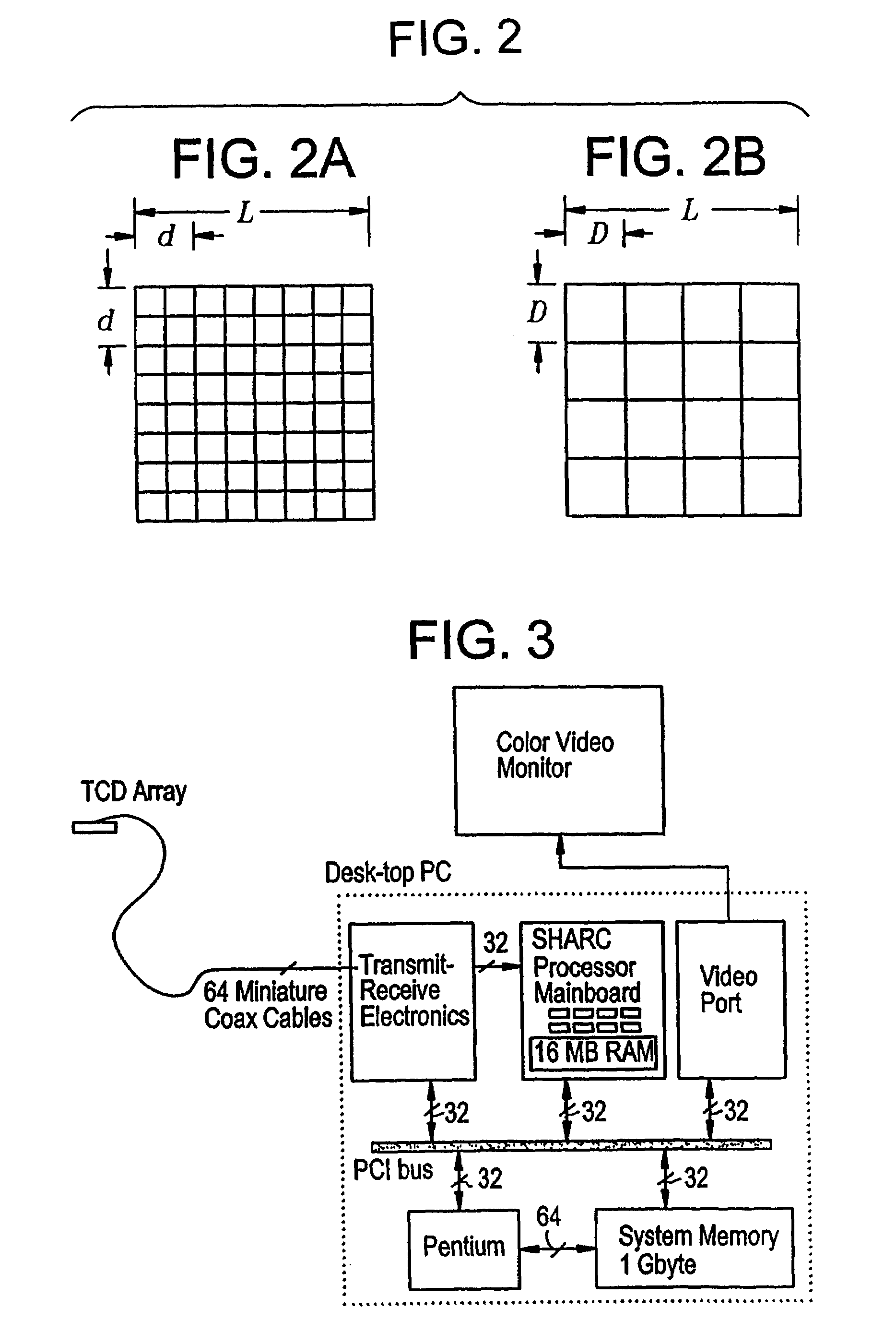Transmitter patterns for multi beam reception
a multi-beam, transmitter technology, applied in tomography, instruments, applications, etc., can solve the problems of increasing sensor cost with the number of elements in the array and the number of processing channels, and the inability to monitor blood velocity in the intensive care unit or surgical application. , to achieve the effect of greater resolution
- Summary
- Abstract
- Description
- Claims
- Application Information
AI Technical Summary
Benefits of technology
Problems solved by technology
Method used
Image
Examples
example 1
An Ultrasound Diagnostic and Monitoring Sensor with Real-Time 3-D Mapping and Tracking of Blood Flow
[0214]This embodiment of the present invention has application for medical evaluation and monitoring multiple locations in the body; however, the transcranial Doppler application will be used as an example to describe the invention.
[0215]This invention provides: (1) affordable three-dimensional imaging of blood flow using a low-profile easily-attached transducer pad, (2) real-time vector velocity, and (3) long-term unattended Doppler-ultrasound monitoring in spite of motion of the patient or pad. None of these three features are possible with current ultrasound equipment or technology.
[0216]The pad and associated processor collects and Doppler processes ultrasound blood velocity data in a three dimensional region through the use of a planar phased array of piezoelectric elements. Through use of unique beamforming and tracking techniques, the invention locks onto and tracks the points ...
example ii
Ultrasound Measurement of Blood Volume Flow
[0298]As explained above, current ultrasound Doppler devices measure radial velocity. Several methods now exist for 3-D ultrasound imaging, such as those involving transducer motion. A three-dimensional image with Doppler allows for the measurement of vector velocity. Example I above provides measurement and long term monitoring of three-dimensional vector velocity. If the resolution of a color flow Doppler image is sufficient to provide an estimate of the inside diameter of the blood vessel, then measurement of volume blood flow becomes practical. Presently available ultrasound imaging devices have either low resolution or they only produce a two-dimensional image. The present invention combines vector velocity information (such as attained as explained in Example I above) with additional information to obtain volume flow. The additional information is the inside diameter of the vessel under examination, the blood velocity profile across t...
example iii
3-D Doppler Ultrasound Blood Flow Monitor with Enhanced Field and Sensitivity
[0330]This example sets forth an ultrasound Doppler device and method that enables non-invasive diagnosis (the conventional role of ultrasound systems), and also non-invasive unattended and continuous monitoring of vascular blood flow for medical applications. In particular, the embodiment of the present invention set forth in this example provides: (1) affordable three-dimensional imaging of blood flow using a low-profile easily-attached transducer pad, (2) real-time vector velocity, and (3) long-term unattended Doppler-ultrasound monitoring in spite of motion of the patient or pad. None of these three features are possible with current ultrasound equipment or technology.
[0331]The pad and associated processor collects and Doppler processes ultrasound blood velocity data in a three-dimensional region through the use of a two-dimensional phased array of piezoelectric elements on a planar, cylindrical, or sph...
PUM
 Login to View More
Login to View More Abstract
Description
Claims
Application Information
 Login to View More
Login to View More - R&D
- Intellectual Property
- Life Sciences
- Materials
- Tech Scout
- Unparalleled Data Quality
- Higher Quality Content
- 60% Fewer Hallucinations
Browse by: Latest US Patents, China's latest patents, Technical Efficacy Thesaurus, Application Domain, Technology Topic, Popular Technical Reports.
© 2025 PatSnap. All rights reserved.Legal|Privacy policy|Modern Slavery Act Transparency Statement|Sitemap|About US| Contact US: help@patsnap.com



